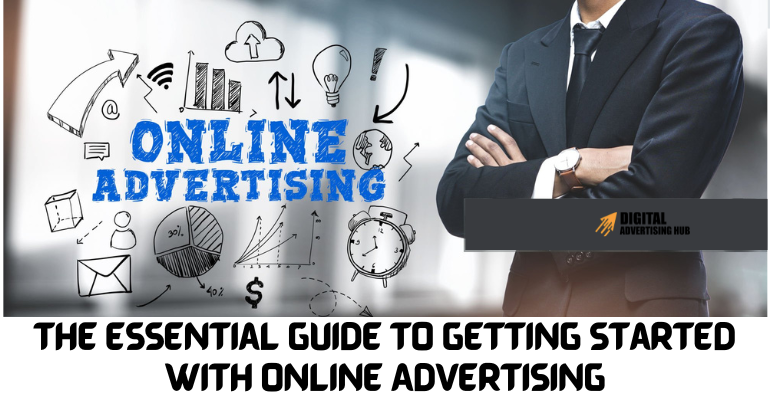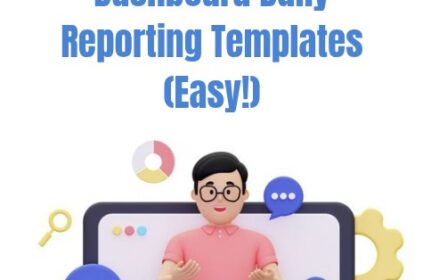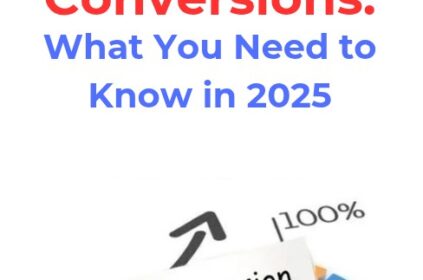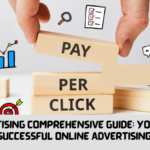Did you know that a whopping 63% of all advertising spending goes towards digital channels in 2024 [Source: WordStream]? This statistic underscores a fundamental truth: in today’s digital age, if your business isn’t leveraging online advertising, you’re missing out on a massive opportunity to reach your target audience.
Imagine this: millions of potential customers are actively searching online for products and services like yours every single day. But with so much digital noise, how do you ensure your brand cuts through the clutter and gets noticed?
Are you struggling to generate brand awareness? Feeling frustrated by limited website traffic? Wishing you could connect with highly targeted leads who are ready to buy?
Online advertising holds the key to unlocking these challenges. By strategically placing your brand message across various online channels, you can achieve a multitude of goals – from boosting brand awareness and driving website traffic to generating qualified leads and ultimately increasing sales.
This comprehensive blog post will equip you with the knowledge you need to get started with online advertising. We’ll break down the essential concepts, explore the diverse advertising landscape, and provide a step-by-step roadmap to launch your successful online advertising campaign. So, are you ready to unleash the power of online advertising for your business? Let’s dive in!
Understanding Key Concepts in Online Advertising

Before we jump into the exciting world of online advertising channels, let’s solidify our understanding of some key terms you’ll encounter frequently. These metrics are the building blocks for creating and measuring effective online advertising campaigns. Here’s a breakdown for beginners and intermediates:
#1. Impressions: Imagine your ad is a billboard on a busy highway. Every time someone drives by and sees your billboard, that counts as an impression. In the online advertising world, an impression is simply the number of times your ad is displayed on a web page or app.
It tells you how many people potentially saw your ad, but it doesn’t guarantee they actually noticed or interacted with it.
#2. Clicks: Think of a click as someone stopping their car to take a closer look at your billboard. In online advertising, a click happens when a user actually interacts with your ad by clicking on it. This could lead them to your website, a landing page with more information, or even a download link.
A high click-through rate (CTR), which is calculated by dividing the number of clicks by impressions (clicks / impressions), indicates that your ad is grabbing attention and resonating with your target audience.
CTR is a crucial metric for gauging the effectiveness of your ad copy and targeting strategies. A consistently low CTR might suggest a need to refine your ad creative or re-evaluate your targeting parameters.
#3. Conversions: This is the ultimate prize in online advertising! A conversion occurs when someone takes a desired action after seeing your ad. This action could be anything you define as valuable for your business, such as:
1. Completing a purchase on your website
2. Signing up for your email list
3. Downloading a white paper
4. Scheduling a consultation
It’s important to define clear conversion goals upfront and align them with your overall campaign objectives. This allows you to track the effectiveness of your campaigns in driving real business outcomes.
Now, let’s explore two additional terms that help us understand the reach and frequency of our online advertising efforts:
#4. Reach: Imagine throwing a big party and inviting all your friends. The total number of unique individuals who attend your party represents the reach of your event. In online advertising, reach refers to the total number of unique individuals who saw your ad at least once.
#5. Frequency: Continuing with the party analogy, if some of your friends are super enthusiastic and show up multiple times throughout the night, that represents the frequency of their attendance. Similarly, in online advertising, frequency indicates how many times the same person saw your ad within a specific timeframe (e.g., daily, weekly).
Finding the right balance between reach and frequency is crucial. You want to achieve a broad reach to expose your brand to new audiences, but bombarding the same individuals with your ad repeatedly can lead to ad fatigue and ultimately decrease its effectiveness.
Finally, online advertising campaigns can be designed to achieve various goals. Understanding your specific goals helps you choose the most appropriate channels and strategies. Here are some common campaign goals:

#1. Brand Awareness: Imagine trying to build name recognition for your new restaurant in town. Your online advertising campaign might focus on increasing brand awareness and making people familiar with your brand name and offerings.
#2. Lead Generation: Think of collecting email addresses to invite people to your restaurant’s grand opening. Your online advertising campaign might aim at lead generation, attracting potential customers and capturing their contact information for further marketing efforts.
#3. Sales: Let’s say you want to offer a special discount on your opening day. Your online advertising campaign could focus on driving sales, directing traffic to your website, and encouraging them to make a purchase.
By clearly defining your campaign goals upfront, you can set yourself up for success in the exciting world of online advertising channels, which we’ll explore in the next section.
Understanding the Online Advertising Landscape
Online advertising offers various channels, each with its unique strengths and functionalities. Understanding these channels and their capabilities will empower you to make informed decisions about where to place your brand message to achieve maximum impact.
Here’s a breakdown of some of the most prominent online advertising channels:
#1. Search Engine Advertising (SEA):
Imagine potential customers searching online for products or services like yours. SEA allows you to place your ads directly on search engine results pages (SERPs), ensuring your brand appears at the very moment someone is actively looking for what you offer.
This is a highly targeted approach with a strong potential for conversions. Popular SEA platforms include Google Ads and Microsoft Advertising.
#2. Display Advertising:
Think of visually captivating banners or interactive ads strategically placed across websites and apps. Display advertising allows you to showcase your brand message to a broad audience and capture their attention with creative visuals. This approach is particularly effective for brand awareness campaigns and driving website traffic. Common display advertising networks include Google Display Network (GDN) and programmatic advertising platforms.
#3. Social Media Advertising:
Social media platforms like Facebook, Instagram, Twitter, and LinkedIn have become vibrant hubs where people connect and consume information. Social media advertising leverages these platforms’ powerful targeting capabilities to reach highly specific audiences based on demographics, interests, and online behavior.
This targeted approach allows you to tailor your message to resonate with the right people at the right time.
#4. Video Advertising:
In today’s video-centric world, online video platforms like YouTube offer a compelling avenue for advertisers. Video advertising allows you to capture user attention with engaging video content that tells your brand story, showcases product demonstrations, or offers customer testimonials.
This approach can be highly effective for brand awareness, lead generation, and driving sales.
#5. Email Marketing:
While not technically online advertising in the strictest sense, email marketing remains a powerful tool in the digital marketer’s arsenal. By building an email list of qualified leads, you can nurture relationships and promote your products or services directly to a targeted audience who has already expressed some interest in your brand.
Choosing the Right Channels

The optimal online advertising channel (or combination of channels) for your campaign will depend on your specific goals, target audience, and budget. Consider the following factors when making your selection:
#1. Campaign goals: Are you aiming for brand awareness, lead generation, or driving sales?
#2. Target audience: Who are you trying to reach? Understanding their demographics, interests, and online behavior is crucial.
#3. Budget: How much are you willing to invest in your online advertising campaign?
By carefully considering these factors and exploring the diverse online advertising landscape, you can craft a strategic approach to reach your target audience and achieve your marketing objectives.
In the next section, we’ll delve deeper into some of these channels and provide practical tips for getting started with your online advertising journey.
Getting Started with Online Advertising: A Beginner’s Guide
The world of online advertising might seem vast, but don’t be intimidated! Here’s a basic roadmap to equip you with the essential steps for launching your first online advertising campaign:
#1. Define Your Goals:
The foundation of any successful advertising campaign starts with clearly defined goals. What do you want to achieve with your online advertising efforts? Here are some common goals to consider:
1. Increase brand awareness: Get your brand name out there and build recognition among your target audience.
2. Generate leads: Attract potential customers and capture their contact information for further marketing efforts.
3. Drive website traffic: Increase the number of visitors to your website.
4. Boost sales: Convert website visitors into paying customers.
Once you have a clear understanding of your goals, you can move forward with crafting a targeted strategy.
#2. Know Your Audience:
Understanding your target audience is paramount. Who are you trying to reach with your online advertising campaign? Consider factors like:
- Demographics: Age, gender, income level, location, etc.
- Interests: What are their hobbies and passions?
- Online behavior: Which websites and apps do they frequent? What social media platforms do they use?
By creating a buyer persona that details your ideal customer profile, you can tailor your advertising message and targeting strategies to resonate with the right people.
#3. Choose Your Channels:
As we explored earlier, there are various online advertising channels available, each with its strengths and functionalities. Based on your campaign goals and target audience, select the channel(s) that best align with your needs.
Here’s a quick reference guide to help you choose:
- Brand Awareness: Consider display advertising and social media advertising to reach a broad audience.
- Lead Generation: Explore social media advertising and search engine advertising (SEA) to target users actively searching for solutions like yours.
- Website Traffic or Sales: Leverage SEA and social media advertising, potentially combined with retargeting campaigns to capture website visitors who haven’t converted yet.
Remember, you can also experiment with a combination of channels to maximize your reach and impact.
#4. Set Your Budget:
Determine how much you’re willing to invest in your online advertising campaign. Most online advertising platforms operate on a pay-per-click (PPC) model, where you only pay when someone clicks on your ad. Set a realistic budget and allocate it strategically across your chosen channels.
#5. Create Compelling Ads:
Craft engaging ad copy and visuals that will grab attention and resonate with your target audience. Keep your message clear, concise, and highlight the value proposition of your product or service. Use strong visuals that complement your message and entice users to click.
#6. Track and Analyze:
The beauty of online advertising lies in its measurability. Most advertising platforms provide comprehensive tools to track key metrics like impressions, clicks, conversions, and return on ad spend (ROAS).
By monitoring these metrics, you can analyze the performance of your campaigns, identify areas for improvement, and optimize your strategies for better results.
By following these steps and leveraging the wealth of resources available online, you can take your first steps into the exciting world of online advertising. Remember, success comes through experimentation, data-driven decision making, and continuous optimization. So, dive in, get started, and watch your brand reach new heights!
Conclusion
The digital age has opened a treasure trove of opportunities for businesses to connect with their target audience and achieve marketing goals. By harnessing the power of online advertising, you can amplify your brand voice, reach the right people at the right time, and ultimately drive business growth.
This comprehensive guide has equipped you with the foundational knowledge to embark on your online advertising journey. We’ve explored key concepts, unveiled the diverse landscape of advertising channels, and provided a roadmap to get you started.
Remember, the key to success lies in understanding your goals, knowing your audience, and selecting the most appropriate channels to deliver your message. Don’t be afraid to experiment, track your results, and continuously refine your strategies for optimal performance.
As you delve deeper into the world of online advertising, a wealth of resources awaits you. Industry blogs, online courses, and tutorials can provide valuable insights and keep you updated on the latest trends and best practices. Subscribe to our newsletter to receive helpful articles delivered straight into your inbox.
So, are you ready to unleash the power of online advertising for your business? Take the first step today and witness the potential of this dynamic marketing tool to propel your brand forward!










